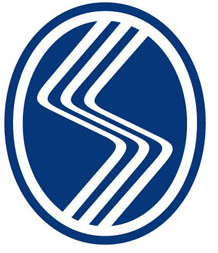Açık Akademik Arşiv Sistemi
Tezgah gövdesi için mineral kompozit malzemesinin mekanik ve titreşim özelliklerinin deneysel incelenmesi
JavaScript is disabled for your browser. Some features of this site may not work without it.
| dc.contributor.advisor | Doktor Öğretim Üyesi Yaşar Kahraman | |
| dc.date.accessioned | 2021-03-16T08:33:09Z | |
| dc.date.available | 2021-03-16T08:33:09Z | |
| dc.date.issued | 2019 | |
| dc.identifier.citation | Öztürk, Hüseyin Onur. (2019). Tezgah gövdesi için mineral kompozit malzemesinin mekanik ve titreşim özelliklerinin deneysel incelenmesi. (Yayınlanmamış Yüksek Lisans Tezi).Sakarya Üniversitesi Sosyal Bilimler Enstitüsü, Sakarya. | |
| dc.identifier.uri | https://hdl.handle.net/20.500.12619/79525 | |
| dc.description | 06.03.2018 tarihli ve 30352 sayılı Resmi Gazetede yayımlanan “Yükseköğretim Kanunu İle Bazı Kanun Ve Kanun Hükmünde Kararnamelerde Değişiklik Yapılması Hakkında Kanun” ile 18.06.2018 tarihli “Lisansüstü Tezlerin Elektronik Ortamda Toplanması, Düzenlenmesi ve Erişime Açılmasına İlişkin Yönerge” gereğince tam metin erişime açılmıştır. | |
| dc.description.abstract | Bu çalışmada, çeşitli bilimsel çalışmalarda ve makalelerde titreşim sönümleme kabiliyetinin konvansyionel metal malzemelere oranla daha yüksek olduğu tespit edilen epoksi reçine matriks malzemesi olarak kullanılarak bir kompozit yapı oluşturulmuştur. Kompozit yapıda esnek bir malzeme olan epoksi reçinenin rijitliğini arttırmak amacıyla bazalt granüller ve silis kumu tanecikleri kullanılmıştır. Rijitliğin sağlanması ile birlikte kırılganlığı artan yapının mukavemetini arttırmak ve lif yönü bulunan bir form oluşturmak amacıyla cam elyaf takviyesi ile kompozit yapı desteklenmiştir. Kompozit yapıda kullanılan malzemelerin tedarik edildikten sonra doğrudan kullanılmaları çeşitli olumsuz durumlara yol açtığı için malzemelerin öncelikle bazı ön işlemlere tabi tutulması gerekmektedir. Bu nedenle kompozit yapının döküm ve serim işlemleri yapılmadan önce malzeme hazırlık prosesleri geliştirilerek bu prosesler malzeme hazırlığı sürecinde uygulanmıştır. Ayrıca döküm işlemi esnasında da birbirinden farklı karakteristiklerde malzemeler kullanıldığı için istenmeyen durumlar söz konusu olabilmektedir. Bu sebepler dolayısıyla döküm işlemi için ayrı bir döküm prosesi geliştirilmiştir. Tüm proses geliştirmelerinde otomasyona uygunluk kriteri göz önünde bulundurulmuştur. Kalıplama işlemi için metal, ahşap ve polimer kalıp malzemeleri ile denemeler yapılarak en uygun kalıp malzemesi seri ve prototip üretimler için belirlenmiştir. Farklı karışım oranlarına sahip numunelere titreşim sönümleme ve çekme testleri uygulanmış ve malzemenin mekanik özellikleri belirlenmiştir. Yapılan testler neticesinde endüstriyel kullanıma uygun ve ideal mekanik özelliklere en yakın sonuçlar elde etmemizi sağlayan malzeme bileşim oranları saptanmıştır. Kompozit yapıdaki malzeme katkılarının mekanik özelliklere olan etkileri irdelenerek pozitif ve negatif yönleri ortaya konulmuştur. | |
| dc.description.abstract | In this study, a composite structure was created using epoxy resin as the matrix material, which is reported in many studies to have a higher vibration damping capacity that conventional metal materials. To improve the rigidity of the normally flexible epoxy resin, basalt granules and silica sand particles were used in the composite structure, while to improve the strength of the structure, which became more fragile as the rigidity was increased, and to create a form with fibers, the composite structure was reinforced with glass fiber. The materials to be used in a composite structure need to be pre-processed, as skipping this step and using them directly as supplied can lead to negative results. Accordingly, material preparation processes have been developed for application prior to the casting and laying of the materials for the composite structure. Undesirable situations may also arise during casting as materials with different characteristics are used, and so a separate casting process has been developed. The criteria of suitability for automation was taken into account in the development of all the processes. Tests were conducted with metal, wooden and polymer molding materials, and the most appropriate mold materials for prototype and mass production were identified. Vibration damping and tensile tests were conducted on samples of different mixes, and the mechanical characteristics of the developed materials were identified. The tests made it possible to identify the material mixture ratios that best approximated the optimum mechanical characteristics, and identified those most suitable for industrial use. The effects of reinforcement materials on the mechanical characteristics of the composite structure were examined, and their strengths and drawbacks were identified. | |
| dc.language | Türkçe | |
| dc.language.iso | tur | |
| dc.publisher | Sakarya Üniversitesi | |
| dc.rights.uri | info:eu-repo/semantics/openAccess | |
| dc.rights.uri | http://creativecommons.org/licenses/by/4.0/ | |
| dc.subject | Cam elyaf | |
| dc.subject | İvme | |
| dc.subject | frekans | |
| dc.title | Tezgah gövdesi için mineral kompozit malzemesinin mekanik ve titreşim özelliklerinin deneysel incelenmesi | |
| dc.type | masterThesis | |
| dc.contributor.department | Sakarya Üniversitesi, Fen Bilimleri Enstitüsü, Makine Mühendisliği Anabilim Dalı, Makine Tasarım ve İmalat Bilim Dalı | |
| dc.contributor.author | Öztürk, Hüseyin Onur | |
| dc.relation.publicationcategory | TEZ |












